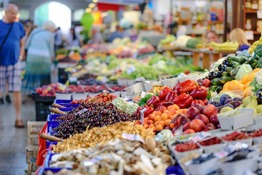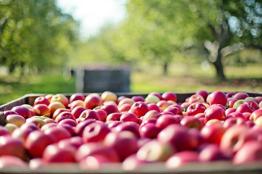Mitzvot addressed by anyone who has a garden in Israel

Anyone who has a garden next to their home in Israel, has the merit of addressing many halachic issues; below are just a few.
According to the Sefer HaChinuch, there are more than 45 mitzvot that are considered mitzvot hateluyot ba’aretz, mitzvot associated with the Land of Israel, and they fall into two categories: (1) laws related to the sanctity of the land, as manifested by helping the poor and mutual responsibility (such as ma’aser ani, shemita, lekket, shichecha, pe’ah, peret, ollelot, ma’aser rishon); and (2) mitzvot that are an expression of our bond with the sanctity of Jerusalem, the sanctity of the kohanim, and to the sanctity of the Beit Hamikdash (such as teruma gedola, terumat ma’aser, ma’aser sheni, bikurim, hafrashat challah, neta revai, orlah, kilei zera’im, kilei ilan, and chadash).
Anyone who has a garden next to their home in Israel has the merit of addressing many halachic issues; below are just a few:
- Kilei zera’aim: The prohibition of planting different types of seeds in close proximity to one another. Halacha determines the minimum permitted distance between different types of plants so as not to transgress this prohibition. There are different categories of plants, and each has its individual guidelines (grains, vegetables, and legumes).
- Kilei Ilan: Some of our fruit trees today are grafted in a prohibited manner. The majority ruling forbids planting, watering, and cultivating such saplings. People need to be able to identify which trees are grafted in a prohibited fashion; which ones are sometimes grafted in a prohibited manner and sometimes in a permissible manner (in order to clarify how the sapling they purchased was grafted); which trees are always grafted in a permissible way; and which trees are never grafted whatsoever.
- Kilei Hakerem. It is forbidden to plant a seed from grains, legumes, or vegetables in close proximity to a grapevine.
- Terumot and ma’asrot: There is nothing more joyous than picking the fruits in your garden and eating them after taking terumot and ma’asrot with a beracha. I’ll never forget when a relative of mine flew in from the United States to visit my parents, who live in a yishuv. My father invited him out to the garden, they picked grapes together from the grapevine, and then made the bracha on separating terumot and ma’asrot. This relative was so excited, as this was the first time he merited taking terumot and ma’asrot with a beracha, and since the Biblical (de’oraita) injuction is to take terumot and ma’asrot from “dagan tirosh ve-yitzhar”, grain, wine (grapes) and (olive) oil!
Terumot and ma’asrot include 20(!) mitzvot, 6 positive (Aseh) and 14 negative (Lo Taase).
- The laws of orlah: The calculation of the orlah year is not so clear-cut, since the halachik age of the tree might be different than its botanical age. Generally speaking, when buying a sapling in a nursery and planting it at home, you need to begin counting the years of orlah all over again, unless certain halachik criteria are met in the nursery.
To our great sorrow, as the Beit HaMikdash has not yet been rebuilt and for additional reasons, it is still impossible to perform all of the mitzvot associated with the Land in Israel in their entirety. In the meantime, we try to observe them in their basic form, and keep the mitzvot that are applicable today with great joy and gratitude to Hashem.




